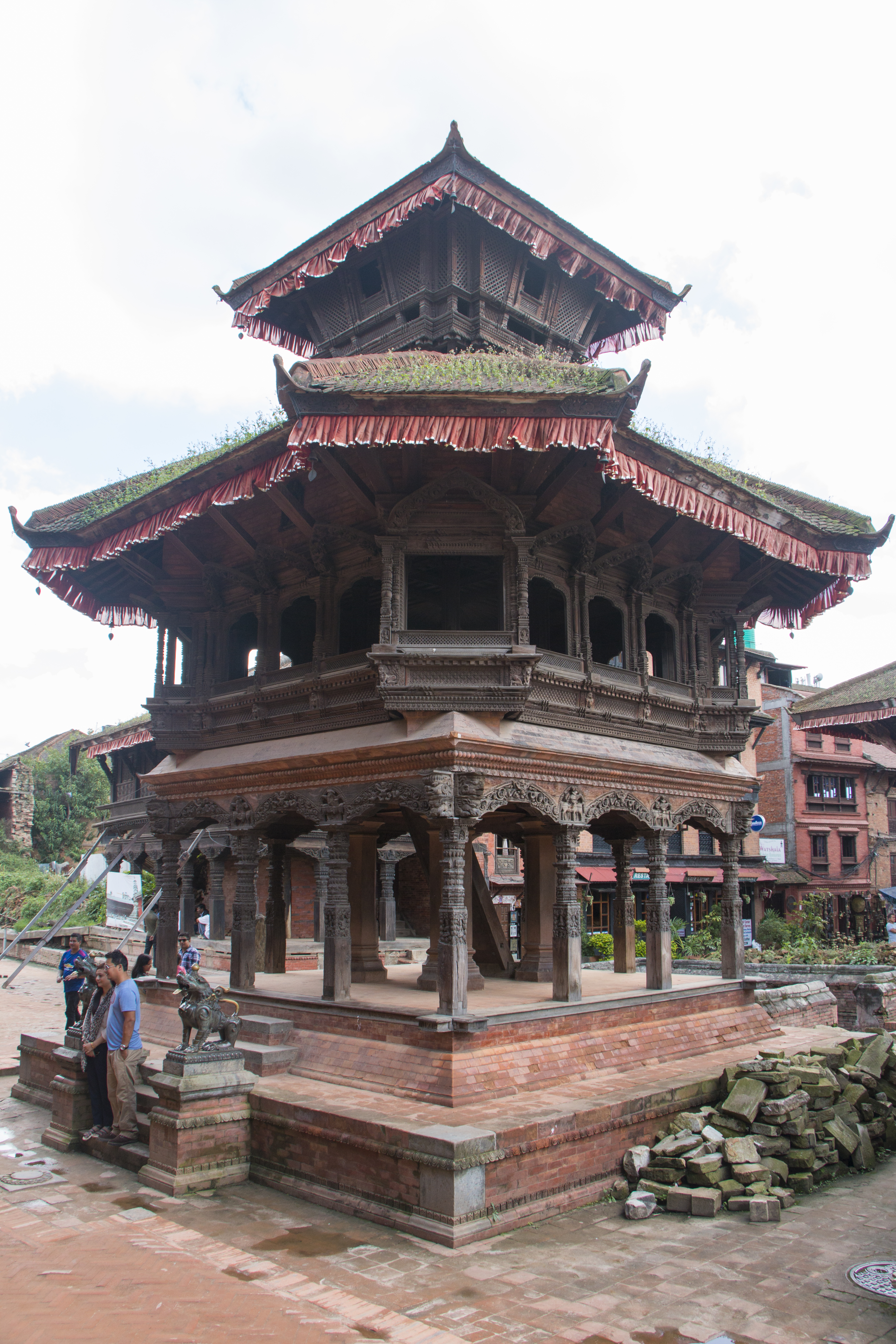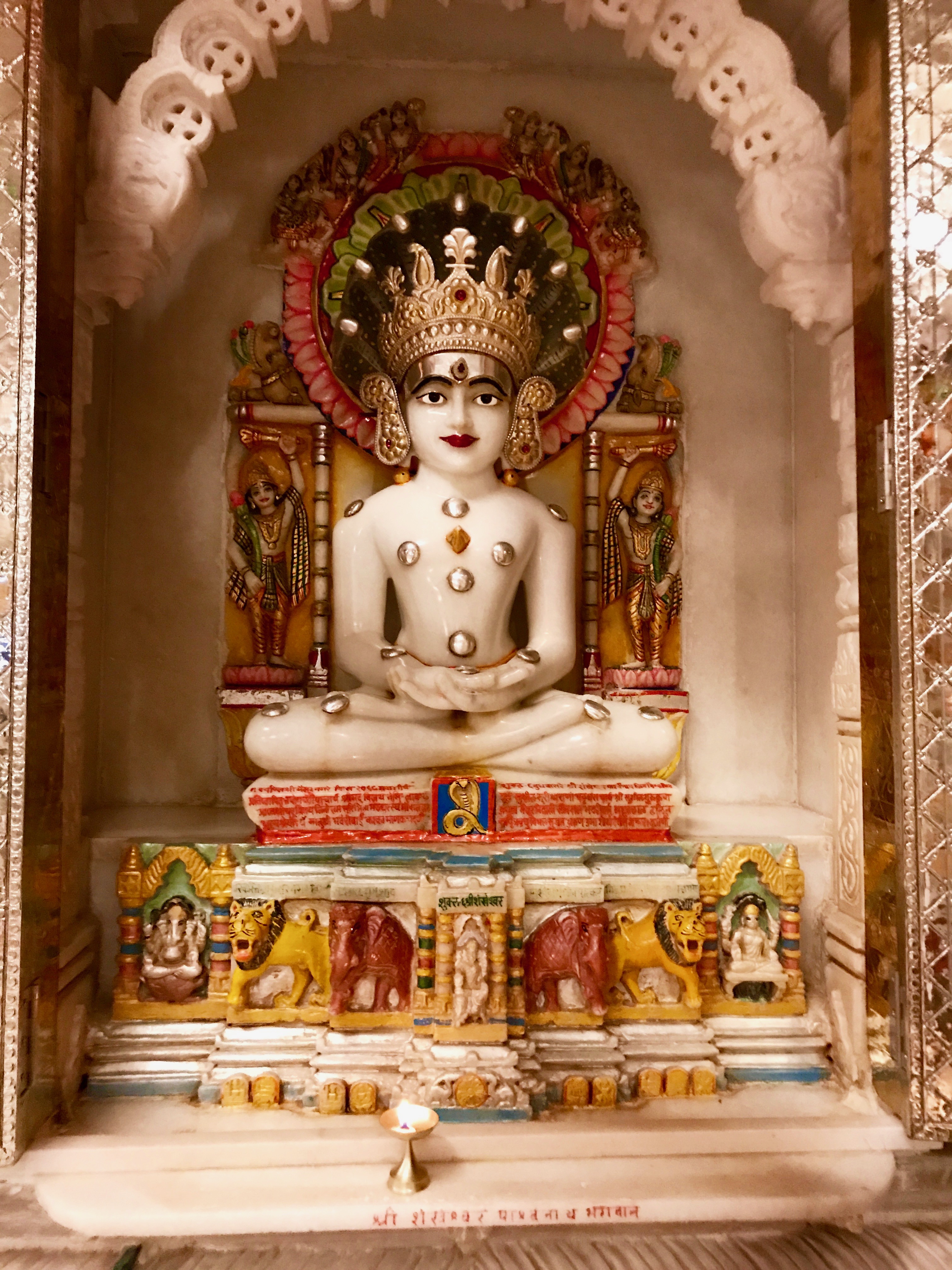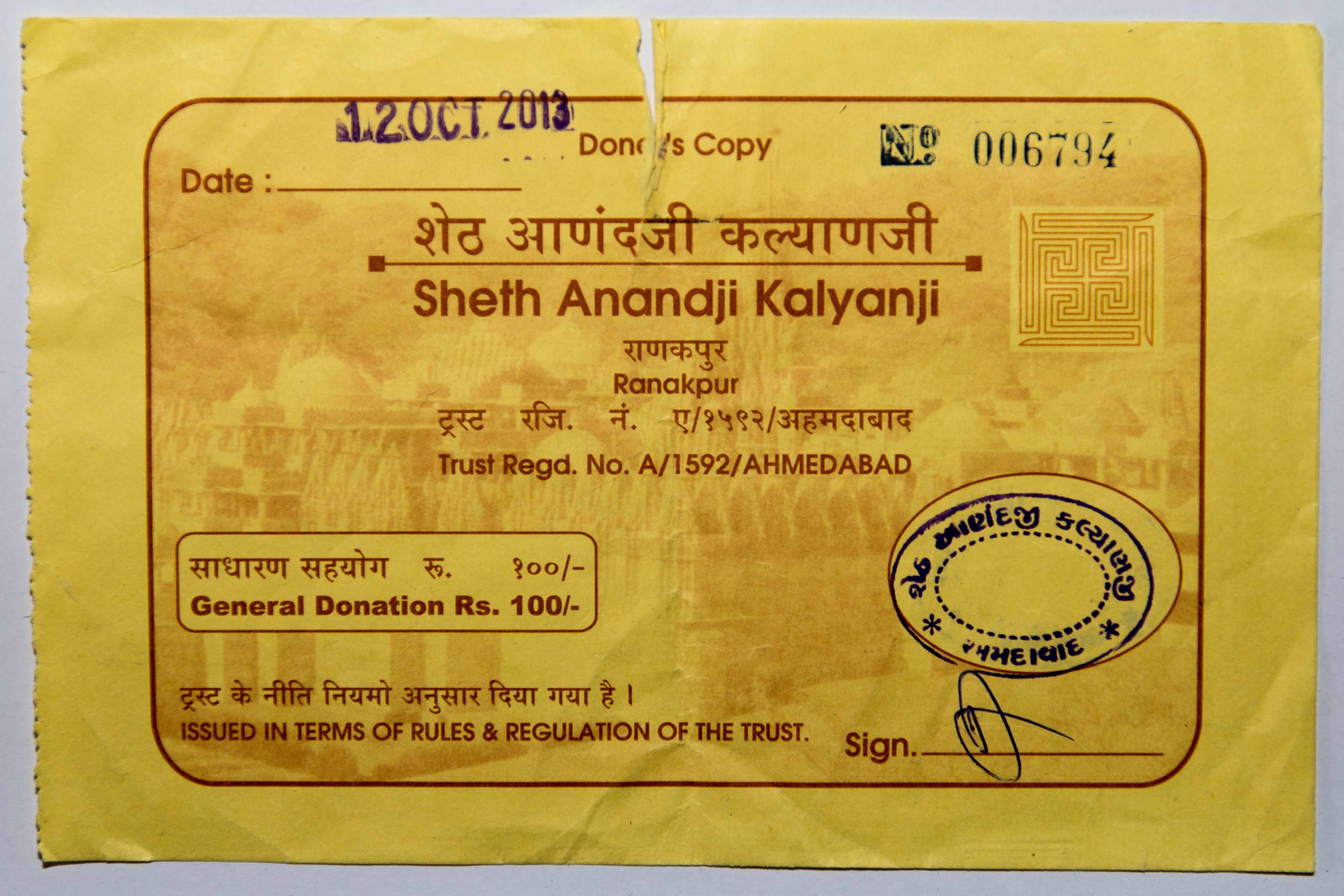|
Lachhuar Jain Temple
Lachhuar Jain temple is a Jain temples located in Lachhuar village near Jamui, Bihar. Lachhuar is one of the most important Jain pilgrimages in Bihar. Description This temple is part of Jain circuit of Bihar and is a popular Jain pilgrimage. This temple also temporarily housed the ancient 2,600 years idol of Mahavira from temple in The temple also has a dharamshala equipped with all modern facilities and bhojnalaya. History According to Śvētāmbara tradition, Lachhuar a doorway to Kshatriyakund which is believed to be the birthplace of Mahavira Mahavira (Sanskrit: महावीर) also known as Vardhaman, was the 24th ''tirthankara'' (supreme preacher) of Jainism. He was the spiritual successor of the 23rd ''tirthankara'' Parshvanatha. Mahavira was born in the early part of the 6t .... To commemorate his birthplace a large temple along with a dharamshala was constructed by Raja Dhanpat Singh Bahadur in 1857. References Citation Sources * * * * * * * ... [...More Info...] [...Related Items...] OR: [Wikipedia] [Google] [Baidu] |
Jainism
Jainism ( ), also known as Jain Dharma, is an Indian religions, Indian religion. Jainism traces its spiritual ideas and history through the succession of twenty-four tirthankaras (supreme preachers of ''Dharma''), with the first in the current time cycle being Rishabhadeva, whom the tradition holds to have lived millions of years ago, the twenty-third ''tirthankara'' Parshvanatha, whom historians date to the 9th century BCE, and the twenty-fourth ''tirthankara'' Mahāvīra, Mahavira, around 600 BCE. Jainism is considered to be an eternal ''dharma'' with the ''tirthankaras'' guiding every time cycle of the Jain cosmology, cosmology. The three main pillars of Jainism are ''Ahimsa in Jainism, ahiṃsā'' (non-violence), ''anekāntavāda'' (non-absolutism), and ''aparigraha'' (asceticism). Jain monks, after positioning themselves in the sublime state of soul consciousness, take five main vows: ''ahiṃsā'' (non-violence), ''satya'' (truth), ''Achourya, asteya'' (not stealing), ''b ... [...More Info...] [...Related Items...] OR: [Wikipedia] [Google] [Baidu] |
Dharamshala (type Of Building)
A dharamshala, also written as dharmashala is a public resthouse or shelter in the Indian subcontinent. Just as sarai are for travellers and caravans, dharamshalas are built for religious travellers at pilgrimage sites. In Nepal there are dharamshalas especially built for pilgrims as well as dharamshalas for locals. Etymology ''Dharamshala'' (Devanagari: धर्मशाला; ITRANS: Dharmashaalaa; IAST: Dharmaśālā) is a word (derived from Sanskrit) that is a compound of ''dharma'' (धर्म) and ''shālā'' (शाला). A loose translation into English would be 'spiritual dwelling' or, more loosely, 'sanctuary'. Rendering a precise literal translation into English is problematic due to the vast and conceptually rich semantic field of the word ''dharma'', and the cultural aspect of India. In common Hindu usage, the word ''dharamshala'' refers to a shelter or rest house for spiritual pilgrims. Traditionally, such ''dharamshalas'' (pilgrims' rest houses) were common ... [...More Info...] [...Related Items...] OR: [Wikipedia] [Google] [Baidu] |
Bihar State Tourism Development Corporation
Bihar State Tourism Development Corporation ( hi, बिहार राज्य पर्यटन विकास निगम), (abbreviated as BSTDC), is a body of the Government of Bihar responsible for the development of tourism in the Indian state of Bihar. It was established in 1980 to develop tourism in the state. The BSTDC is head-quartered at Patna and has offices across all the districts of Bihar. The agency also operates hotels, resorts, and tourist rest houses in key locations in the state. The corporation provides travellers with information about Bihar to promote travel to and in the country. It operates Tourist Information Centres as well as a website. The BSTDC disseminates information about transportation, lodging, food and beverage, and sight-seeing. Tourist Information Centres BSTDC have several tourist reception centres in all major cities and tourist centres, from where conducted tours start and end, in addition to providing complementary information about ... [...More Info...] [...Related Items...] OR: [Wikipedia] [Google] [Baidu] |
Ministry Of Tourism (India)
The Ministry of Tourism, a branch of the Government of India, is the apex body for formulation and administration of the rules, regulations and laws relating to the development and promotion of tourism in India. It facilitates the Indian department of tourism. The head of the ministry is Minister of Tourism (India) held by Shri G. Kishan Reddy. To promote the GDP of the country indirectly and to have friendly relations with them, The Government of India announced officially a Visa on Arrival status/facility for International Visitors to enter/visit India from 43 countries including United States, Australia, Vietnam, Thailand, Vanuatu, Singapore, Israel, Jordan, Kenya, Russian Federation, Brazil, Finland, Germany, Japan, Myanmar on 27 November 2014 and some more countries to follow soon. India stole the limelight at the World Tourism Mart 2011 in London by winning two global awards - World's Leading Destination and World's Leading Tourist Board, Incredible India. History The p ... [...More Info...] [...Related Items...] OR: [Wikipedia] [Google] [Baidu] |
New Delhi
New Delhi (, , ''Naī Dillī'') is the capital of India and a part of the National Capital Territory of Delhi (NCT). New Delhi is the seat of all three branches of the government of India, hosting the Rashtrapati Bhavan, Parliament House, and the Supreme Court of India. New Delhi is a municipality within the NCT, administered by the NDMC, which covers mostly Lutyens' Delhi and a few adjacent areas. The municipal area is part of a larger administrative district, the New Delhi district. Although colloquially ''Delhi'' and ''New Delhi'' are used interchangeably to refer to the National Capital Territory of Delhi, both are distinct entities, with both the municipality and the New Delhi district forming a relatively small part of the megacity of Delhi. The National Capital Region is a much larger entity comprising the entire NCT along with adjoining districts in neighbouring states, including Ghaziabad, Noida, Gurgaon and Faridabad. The foundation stone of New Delhi was l ... [...More Info...] [...Related Items...] OR: [Wikipedia] [Google] [Baidu] |
Motilal Banarsidass
Motilal Banarsidass Publishing House (MLBD) is an Indian academic publishing house, founded in Delhi, India in 1903. It publishes and distributes serials, monographs, and scholarly publications on Asian religions, Buddhology, Indology, Eastern philosophy, history, culture, arts, architecture, archaeology, language, literature, linguistics, musicology, mysticism, yoga, tantra, occult, medicine, astronomy, and astrology. Amongst its publications are the 100 volumes of the Mahapuranas; the 50 volumes of the ''Sacred Books of the East'', edited by Max Müller; ''Bibliotheca Buddhica'' (30 volumes in 32 pts); Ramcharitmanas with Hindi and English translations; the Manusmriti in 10 volumes and the Sanskrit lexicon; and the 7 volumes of ''Encyclopedia of Indian Philosophies''. It also brings out books based on research and study conducted at organizations such as the Indian Council of Historical Research (ICHR), Indira Gandhi National Centre for the Arts (IGNCA), and Indian Coun ... [...More Info...] [...Related Items...] OR: [Wikipedia] [Google] [Baidu] |
Bhagwan Mahaveer
Mahavira ( Sanskrit: महावीर) also known as Vardhaman, was the 24th '' tirthankara'' (supreme preacher) of Jainism. He was the spiritual successor of the 23rd ''tirthankara'' Parshvanatha. Mahavira was born in the early part of the 6th century BCE into a royal Kshatriya Jain family in ancient India. His mother's name was Trishala and his father's name was Siddhartha. They were lay devotees of Parshvanatha. Mahavira abandoned all worldly possessions at the age of about 30 and left home in pursuit of spiritual awakening, becoming an ascetic. Mahavira practiced intense meditation and severe austerities for twelve and a half years, after which he attained '' Kevala Jnana'' (omniscience). He preached for 30 years and attained Moksha (liberation) in the 6th century BCE, although the year varies by sect. Historically, Mahavira, who revived and preached Jainism in ancient India, was an older contemporary of Gautama Buddha. Jains celebrate ''Mahavir Janma Kalyanak'' ... [...More Info...] [...Related Items...] OR: [Wikipedia] [Google] [Baidu] |
Bhojnalaya
Marwari Bhojnalaya is a popular name among Marwari-style purely vegetarian restaurants in many cities in India. They are all independently owned. The term "marwari" implies that it is intended for Marwari merchants, who are strictly vegetarian and prefer relatively simple (which can be eaten daily) and inexpensive food. They are however popular among all vegetarians. The term "bhojanalaya" practically always implies simple and inexpensive vegetarian cuisine. Restaurants named "Jain Bhojanalaya" or "Vaishanva Dhaba" are also vegetarian. Note that restaurants are often called "hotel" in India. Some of them used to offer traditional seating on wooden patiyas on the floor, but the custom is no longer popular and tables and chairs are now more common. Cuisine In spite of the name, the food served is not necessarily Rajasthan style. For example, Dal-bati meals and dishes such as gatte ki kadhi which are quite popular in Rajasthan, are often not served, or served only on special occasio ... [...More Info...] [...Related Items...] OR: [Wikipedia] [Google] [Baidu] |
Jain Temple
A Jain temple, Derasar (Gujarati: દેરાસર) or Basadi (Kannada: ಬಸದಿ) is the place of worship for Jains, the followers of Jainism. Jain architecture is essentially restricted to temples and monasteries, and Jain buildings generally reflect the prevailing style of the place and time they were built. Jain temple architecture is generally close to Hindu temple architecture, and in ancient times Buddhist architecture. Normally the same builders and carvers worked for all religions, and regional and period styles are generally similar. For over 1,000 years, the basic layout of a Hindu or most Jain temples has consisted of a small garbhagriha or sanctuary for the main murti or cult images, over which the high superstructure rises, then one or more larger mandapa halls. Māru-Gurjara architecture or the "Solanki style" is, a particular temple style from Gujarat and Rajasthan (both regions with a strong Jain presence) that originated in both Hindu and Jain temp ... [...More Info...] [...Related Items...] OR: [Wikipedia] [Google] [Baidu] |
Śvētāmbara
The Śvētāmbara (; ''śvētapaṭa''; also spelled ''Shwethambara'', ''Svetambar'', ''Shvetambara'' or ''Swetambar'') is one of the two main branches of Jainism, the other being the ''Digambara''. Śvētāmbara means "white-clad", and refers to its ascetics' practice of wearing white clothes, which sets it apart from the ''Digambara'' "sky-clad" Jains, whose ascetic practitioners go naked. Śvētāmbaras, unlike Digambaras, do not believe that ascetics must practice nudity. The Svetambara and Digambara traditions have had historical differences ranging from their dress code, their temples and iconography, attitude towards Jain nuns, their legends and the texts they consider as important. Svetambara Jain communities are currently found mainly in Gujarat, Rajasthan and coastal regions of Maharashtra. According to Jeffery D. Long, a scholar of Hindu and Jain studies, about four-fifths of all Jains in India are Svetambaras. History Majority of the Svetambaras are ''murtipujak ... [...More Info...] [...Related Items...] OR: [Wikipedia] [Google] [Baidu] |
Jain
Jainism ( ), also known as Jain Dharma, is an Indian religion. Jainism traces its spiritual ideas and history through the succession of twenty-four tirthankaras (supreme preachers of ''Dharma''), with the first in the current time cycle being Rishabhadeva, whom the tradition holds to have lived millions of years ago, the twenty-third ''tirthankara'' Parshvanatha, whom historians date to the 9th century BCE, and the twenty-fourth ''tirthankara'' Mahavira, around 600 BCE. Jainism is considered to be an eternal ''dharma'' with the ''tirthankaras'' guiding every time cycle of the cosmology. The three main pillars of Jainism are ''ahiṃsā'' (non-violence), ''anekāntavāda'' (non-absolutism), and '' aparigraha'' (asceticism). Jain monks, after positioning themselves in the sublime state of soul consciousness, take five main vows: ''ahiṃsā'' (non-violence), '' satya'' (truth), '' asteya'' (not stealing), ''brahmacharya'' (chastity), and '' aparigraha'' (non-possessiveness). Th ... [...More Info...] [...Related Items...] OR: [Wikipedia] [Google] [Baidu] |
Anandji Kalyanji Trust
Anandji Kalyanji Trust (Gujarati શેઠ આનંદજી કલ્યાણજી પેઢી) is the largest and the oldest Jain trust, managed by lay Jains, with headquarters at Ahmedabad which manages more than 1200 Jain temples. The original charitable trust is said to have been founded somewhere in decades of 1630–40 AD and is running under name ''Anandji Kalyanji ni Pedhi'' or Anandji Kalyanji Trust since decade of 1720. History Initially founded to manage the Shatrunjaya Palitana temples, it now manages numerous Jain tirthas and temples belonging to the Shvetambara tradition. It is said to have been founded by Shantidas Zaveri and its leadership has been in the same family for generations, who have been the Nagar-seths of Ahmedabad. Kasturbhai Lalbhai, an industrialist and educationist, who was the eleventh generation member, headed the trust for 50 years, followed by Shrenik Kasturbhai Lalbhai for 30 years. Samveg Lalbhai now heads the trust. Bhavarlal Nahta ... [...More Info...] [...Related Items...] OR: [Wikipedia] [Google] [Baidu] |





.png)



